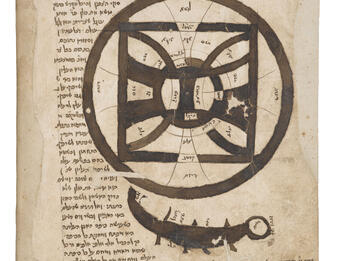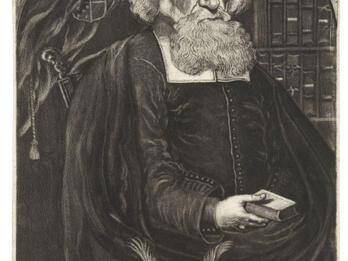Levush malkhut (Royal Garment)
Mordechai Jaffe
1603
Introduction
I have divided this garment into three parts, all of which can serve as cloaks for the rabbis. I have arranged them in the following order: the first part is my commentary on the Guide; the second, my commentary on the Laws of the Sanctification of the New Moon, and the third part, my commentary on Recanati. For all the students of the…
Creator Bio
Mordechai Jaffe
Mordechai ben Abraham Jaffe was born in Prague but moved to Poland at a young age to study with Solomon Luria and Moses Isserles. In 1553, he was appointed head of the Prague yeshiva. In 1592, he became rabbi of the city, and from 1599 until his death he served as the rabbi of Poznań. For the last six years of his life, he was one of the leading rabbinic figures in the Council of the Four Lands. Five volumes of his monumental work, Levush malkhut (Royal Garment), are a commentary on the Shulḥan ‘arukh (printed in 1590, 1594, 1598, and 1599); others are a commentary on Maimonides (1595) and Rashi (1604). His kabbalistic exegesis (1595) a book of homilies, was never printed.
Related Guide
Early Modern Rabbis and Intellectuals on the Move
Carrying books and knowledge, itinerant rabbis and scholars traveled between communities, facilitating cultural exchange.
Related Guide
The Rise of Kabbalah
Kabbalah spread widely after the Spanish expulsion. The Zohar's printing in Italy, Safed's influential kabbalistic center, and Shabbetai Tzvi's messianic movement popularized mystical ideas across Jewish communities.
Related Guide
Early Modern Spiritual Ideologies
Early modern Jewish spiritual life encompassed diverse elements, including theology, ethics, liturgy, and messianism.
You may also like

Kabbalistic Diagram and Calendar
Nishmat Shabbetai ha-Levi (The Breath of Shabbetai ha-Levi)
Puerta del cielo (Gate of Heaven)

Nishmat ḥayim (Breath of Life)



